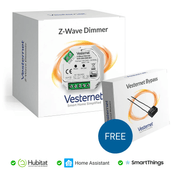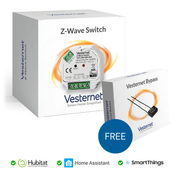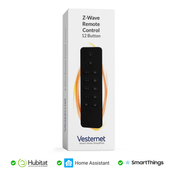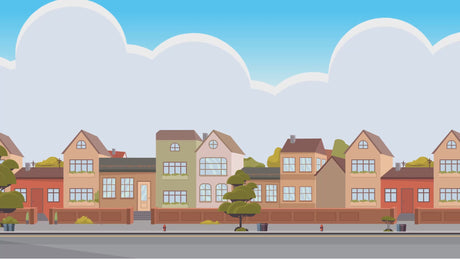David Keenan has been interested in home automation for quite some time, he's had old X10 devices installed in his house since the mid-1990s. But he's decided to move to Z-Wave and is in the process of modernising his home automation system.
"I just wanted a stable wireless system that could easily replace X10 and enable me to slowly build up a new system to control my lighting"David Keenan |
 |
|
Why Move to Z-Wave?
At the time, X10 was the only affordable technology available in the 1990s (and 1970s), so it was the only way to add automation to a home's lighting. David installed X10 and had it running for many years, but its reliability is stating to become an issue and is really reaching the end of its life. So when some devices needed replacing, David looked at modern wireless technologies and settled on Z-Wave. The range of devices and main features of Z-Wave such as status updates made it the most suitable solution, and as it's wireless there was no ripping up floorboards or adding new wires.
"I've found Z-Wave works great for me, it's a modern system, solves problems I had
with X10 and I can add to it as I go."
David's Set-up
David's main focus has been on automating his lighting, he's been able to do this room by room, adding devices and control when he needed to.
Main Controller
After looking at various Z-Wave controllers available from Vesternet, David settled on the Vera. It had the right amount of capabilities, device support and it has a great price.
Bedroom Lighting
David's installed a Fibaro dimmer so that the bedroom lights can be controlled wirelessly and set to different brightness settings.
Landing Lighting
On the upstairs landing. David wanted the lights to be motion activated, but only when the light level was below a certain level. He did this by using a Z-Wave motion detector, which includes a light sensor, and associated this with a Fibaro Dimmer controlling the landing lights. There's no need for the lights to come on at full brightness, so David set the dimmer to 30%, saving energy and not blinding his wife in the middle of the night.
Lounge
The lounge has two sets of lamps that David has controlled by using Z-Wave plugin sockets. Two lamps are positioned near the front windows, these are controlled by dimmer sockets that turn them on at 70% 10-minutes before sunset and then reduce to 50% at 1-hour after sunset. The other lamps in the lounge are controlled by Z-Wave On/Off sockets and turn on automatically at sunset. The sunset schedules are all controlled by scenes running in the Vera controller.
Kitchen
Fluorescent strips under the cupboards give low level lighting and turn on 30mins before sunset, controlled by a Fibaro Relay.
Doors and Windows
 All ground floor windows have a Fibaro Door/Window Sensor installed, as well as the front and back doors. These sensors immediately send David an email if they are opened - great for letting him know if there is a problem, or even if the neighbour's been to water the plants when he's away.
All ground floor windows have a Fibaro Door/Window Sensor installed, as well as the front and back doors. These sensors immediately send David an email if they are opened - great for letting him know if there is a problem, or even if the neighbour's been to water the plants when he's away.
Loft
The loft light is automatically controlled by an Aeotec MultiSensor so that when the loft hatch is opened, it automatically turns on the loft light - no more hunting around in the dark for a light switch. It also reports the loft's temperature to the Z-Wave system and can alert David if the temperature falls to a low level that could cause frozen pipes.
Garage
Motion activated lighting has been very easily installed by using a lamp holder installed in the over head light together with a Z-Wave motion sensor. The light turns on as soon as the side door or the main garage door opens.
David's system is working well now and gives him all the convenience he wants. His next project is to use the Aeotec MultiSensors to add more motion activated lighting in the other rooms.
Vesternet Case Studies
Read all of our real user case studies Here




















